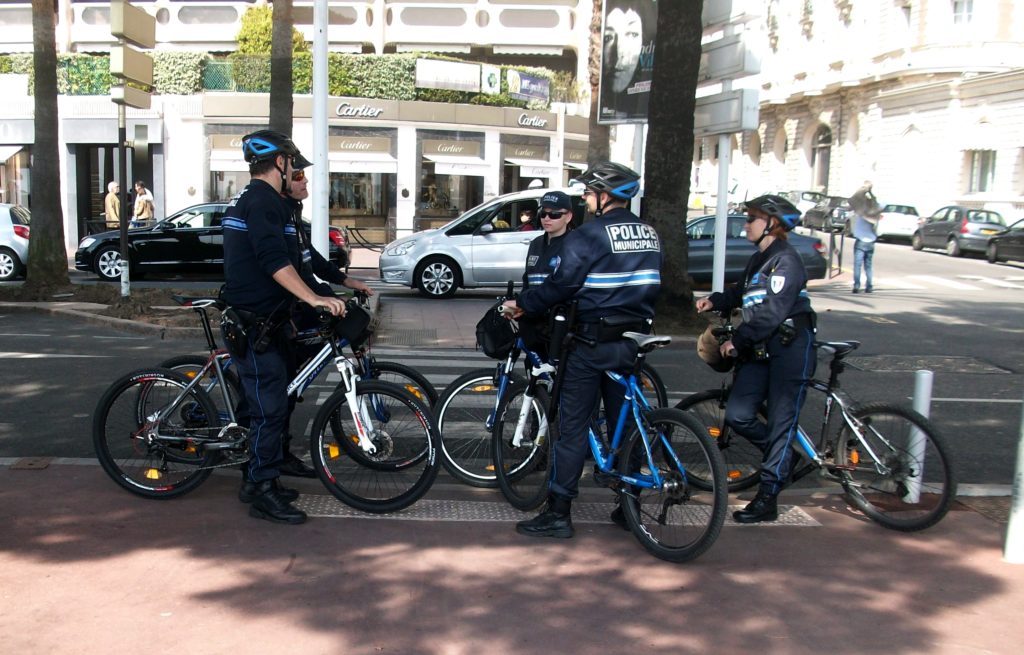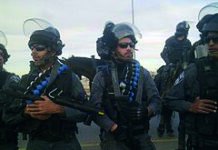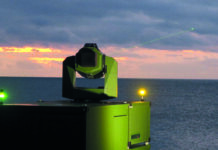The French police forces are made up of a large number of different units with different operational areas. In recent decades, the French government has launched several attempts to integrate and unify them.
In France, the role of the police is defined by article 12 of the Declaration of the Rights of Men and of the Citizen, dated 26 August 1789. It states that “in order to guarantee the rights of men and of the citizen, a public force is necessary”. That public force should be to the advantage of all, and not merely to the advantage of those who govern it. To prevent abuse of the public force by one individual, three types of police forces were established: the police nationale, the gendarmerie nationale and the police municipale. We’ll start with the Police municipale, the smallest of the three.
Police Municipal
The municipal police (or local police) is responsible for maintaining order, security, safety, cleanliness and tranquility in the public space at the communal level. It sees to the application of the municipal ordinances, the traffic code, and the town planning code. The judicial officer of the municipal police is the mayor of the municipality who represents the State in municipal matters of law enforcement. The municipal police, around 22.000 strong, is organised in brigades and groups and can have specialised units like motorcycle and horse brigades, or canine and nautical – even brigades equipped with all terrain bikes or with the sole purpose of patrolling at night. The municipal police, giving the mayor’s substantial powers in the field of law enforcement in his or her municipality, is sometimes regarded as a remnant of the Ancien regime. Several attempts to merge the municipal police with the National police or with the Gendarmerie have failed so far because of the resistance of the mayors against the confinement of their executive powers and because the two national police forces refuse to allow the municipality police to raise to their level.
“Une Guerre des Polices”
The Police nationale and the Gendarmerie nationale share the same emergency call number 17 and both fall under the operational authority of the Ministry of the Interior. At the dispatching, it is decided whether a call will be dispatched to the police (urban area) or to the gendarmerie (rural area). Although both police forces are concerned with law enforcement and fighting crime, there are many substantial differences to be noted. First, the status: members of the national police are considered civil servants, while members of the gendarmerie are part of the French military. The zones in which they operate, are also quite different: although both forces are responsible for the whole of the French territory, the police are more present in urban areas while the gendarmerie exercises its powers in the countryside. Consequently, 75% of crime and delinquency in France is managed by the police and only 25% by the gendarmerie. Although both police forces have similar missions, they are confronted with quite different problems due to the geographic and demographic differences between urban and rural areas. The gendarme lives in the barracks, while his colleague from the police lives in his own house. Of course, each police force disposes of its own traditions, modus operandi, uniforms, chain of command, equipment, and ranks.
All three police forces have more or less distinguished responsibilities and their territorial authority is well defined. However, there is a huge overlap and sometimes competition between the police forces, leading to a real “guerre des polices” from time to time. In recent years, efforts were made to streamline the different police and paramilitary forces in France, but so far, it has been a very sensitive, difficult, and expensive experiment. The overview of the two most import police forces in France will clarify why that is.
Police Nationale
The Police nationale was created in 1941 during the Vichy regime and is attached to the Ministry of the Interior. Its missions are to guarantee the individual and collective liberties, to defend the institutions of the French republic, to maintain peace and public order and to protect individuals and property. The jurisdiction of the police nationale extends to the entire territory of France. At the head of the national police is general director Eric Morvan, a 62-year old administrator from Nevers. The national police is around 150.000 officers strong.

Nine entities fall under his direct control: besides a unit to support the decision making process, an information and communication service, and a service that conducts research with regard to the history of the French police, there is a branch for the coordination of the fight against drugs, a service that is concerned with victims of crime and terrorism, a unit in charge of the security on the public transport network, and one in charge for big public events. Two units that have become prominent the last years are the UCLAD, the unit that coordinates the combat against terrorism and that is in charge of evaluating the terrorist threat level, and the RAID, an elite unit that is part of the Intervention Force of the Police nationale, established after the Munich Olympic games of 1972 and always ready to intervene at major crises.
General director Morvan also directs 11 directorates: some in a more supportive role, like the human resources and competences directorate, the directorate for international cooperation, or the directorate for public institutions, including the National Police Academy or the National Institute for Police Science; the directorate for logistics, purchase and equipment, as well as the Music Chapel of the police, also fall into that category. The General Inspection of the National Police, the service in charge of inspecting the services and units of the police by conducting audits, formulating recommendations and by investigating complaints against police officers, concludes the list of the supporting units and services.
At the operational level, there is first of all the protection service, in charge of the protection of the president of the French republic and of French or foreign government members or other authorities that need protection. The protection of important buildings and ceremonies is also part of the job. Different units offer either static or mobile protection.
Four central directorates are in charge of the real police work: the Judicial police, Public security, Border police, and the Direction Centrale des Compagnies Républicaines de Securité, commonly known as the CRS.
The Judicial Police
The Judicial police has a general staff and 7 specialised services; it counts 5300 officers that concern themselves with crime, economic and financial cases, police techniques and scientific research, and external affairs. Its area of operations is the whole of the French territory, including the overseas territories, but excluding the prefecture of Paris, which has its own direction régionale de la police judiciaire de Paris. There are 11 territorial directions, 2 regional (Versailles for the city of Paris and Ajaccio for Corsica) and 9 interregional, including one for Antilles-Guyana. Its activities are aimed at preventing and countering specialized, organised and transnational delinquency and crime. It is also in charge of the surveillance of casino’s and race fields. The Judicial police is also actively engaged in the fight against terrorism and in international structures that favour cooperation among police forces. In organised crime, the following main topics are handled by the Judicial police: great-scale financial delinquency, the trafficking of drugs and of human beings, serious violence against persons, the fight against counterfeiting, the trafficking of cultural goods, the fight against cyber-crime (since 2000), infringement of commercial law and the fight against financial and economic fraud. In 2002, so-called Regional Intervention Groups were established in each territorial direction to counter the underground economy and the different forms of organised crime that come with it and form a source of insecurity and social disintegration in numerous “sensitive” quarters.
Central Direction for Public Security
The Central Direction for Public Security guarantees public safety and security all over the French territory at any time. It is permanently present in the streets of France and guarantees safety and security for persons and their property on a daily basis. It also assumes a big role in crime prevention. As such, it is the most important active Direction centrale of the Police nationale. Its missions are as follows: interventions to support people that called the emergency number 17; the fight against crime and serious city violence, countering road insecurity, countering drug trafficking and fighting hooliganism at major sports events (for which a national division was created). Other missions include the prevention and the dissuasion of crime through an active and visible presence in the public space and through the development of partnerships with local actors, like schools, social workers, etc. Finally, the Central Direction for Public Security oversees major events like street demonstrations, the transport of important people and the protection of sensitive places. It is responsible for implementing these measures and commanding the public order police units. It covers 40% of the French population, and 617 or 75% of the ‘sensitive’ quarters, being the equivalent of 1596 villages. It handles over 62% of the crimes commited on French territory.
Border Police
The French Border Police (direction centrale de la police aux frontières) was created in 1999 and profoundly reorganised in 2003. It comprises a general staff, a ‘new technologies’ unit, a railway police, and three departments concerned with international affairs, the fight against illegal immigration as well as human and material resources.
The railway police is responsible for assuring the security of the French railway network, together with its operators. For that purpose, it is composed of 7 special units, ‘Brigades de Chemins de fer’, with each brigade responsible for a certain zone. It also takes care of controlling the railway traffic to neighbouring countries and takes part in mixed patrols with police officers from Belgium, Germany, Switzerland, Italy, and Spain. Needless to say that the railway police plays an important role in the fight against illegal immigration, particularly on the railway network.
The Department for International and Transnational Affairs and Security is concerned with the legal framework regarding transnational transport. It produces texts, takes part in national and European discussions regarding the regulation of transnational transport, answers legal questions with regard to border control in close cooperation with other services and administrations. It also contributes to European legislation and institutional cooperation to enhance the safety and security of international transport via railways, harbours and airports that fall under the competence of the Border police.
The department for combatting illegal immigration coordinates, at the national level, the fight against al forms of illegal immigration and workers without a permit. It is responsible for the deportation of illegal immigrants and analyses migratory fluxes.
The last department of the Border police manages the budget and the human and material resources of this central direction.
Finally, the Border police assures the operational coordination at the European level of the 10 police and customs cooperation centres with Germany, Belgium, Spain, Italy, Luxemburg and Switzerland and of the 4 police stations that it shares with Germany.
Compagnies Républicaines de Sécurité
Created by General De Gaulle in the aftermath of the liberation of France in 1944 to contribute to the reestablishment of law and order in the French republic, the Compagnies Républicaines de Sécurité (CRS) are mobile units that form the general reserve of the Police nationale specialised in preserving order. Throughout the years, the CRS has started doing other police work too, like traffic control, assistance at sea and in mountainous areas, the fight against petty crime, the surveillance of ports and airports, and escorting and protecting VIP’s and their residences in France. Most of all, however, the CRS is known for the suppression of riots and urban disturbances, for example, the recent uprising of the gillets jaunes.
The territorial organisation of the CRS consists of 3 levels: a general direction within the National police in Paris, as well as 7 regional directions and territorial units. There are 60 companies for keeping order, 1 company dedicated to the protection of VIP’s, 9 highway companies, 6 regional motorcycle units, a CRS for the Alps and mountain sections, and the music chapel of the French police.

Gendarmerie Nationale
The gendarmerie is the successor of the maréchaussées, an embryonal police force dating back to the Middle Ages. In 1791, while the French Revolution was raging, the Gendarmerie (deduced from les gens d’armes, or ‘the people who bear arms’) was established to bring the police forces under the control of the revolutionary regime. Since then, its responsibilities have gradually been expanded. Army General Richard Lizuray is the general director of the Gendarmerie nationale since 2016. He is the head of the general directorate that encompasses a department that controls and inspects the gendarmerie (the IGGN) and advises the general director in policy matters, an organ that studies and reflects on the evolution of the military role of the gendarmerie, a Planning Centre and a Crisis Management Centre in which a variety of crisis management experts support the director general, territorial units or other administrations with their expertise. Four central offices complete the general directorate: an office that coordinates the fight against illegal workers in France, an office for itinerant cross-border crime gangs, an office for crimes against the environment and public health, and an office with regard to crimes against humanity, genocide and war crimes.
The authority of the gendarmerie extends to the whole of the territory of France, in peacetime as well as in wartime, and in all types of crises that may occur. Securing and maintaining public order and guaranteeing general public safety and security are the two missions of the gendarmerie.
The military organisation of the gendarmerie, from the general direction to the basic unit of the mobile (MG) or the departmental gendarmerie (DG), allows a permanent operational posture, a short response time in case of an incident, and a large capacity for mobilisation. Its manoeuvrability and adaptability makes it able to respond to any sudden crisis, anytime, anyplace, with deployable command posts, units and support units.
Gendarmerie Mobile
The mobile gendarmerie is specialised in maintaining public order in the whole spectrum of crises. The general reserve of the gendarmerie is at the disposal of the government, not only for police tasks, but also for purely military missions, side by side with territorial units. It can be deployed on the whole territory of France, including the overseas territories and the Paris region, and on theatres abroad, within the framework of military operations.
The GM counts approximately 13000 personnel, divided over 109 squadrons, 17 groupings and 1 armoured group. It is responsible for keeping order and for fighting crime and delinquency on a day to day basis. On average, a GM squadron is sent on missions outside the garrison for 180 days per year.
Besides maintaining or restoring public order, the following missions are trusted to the GM: it can function as reinforcements for the departmental gendarmerie, particularly in the so-called ‘zones de sécurité prioritaires’ (ZSP), where they can be deployed for safeguarding and security missions, interventions within the framework of judicial actions, protection of persons and property in sensitive sectors, etcetera. The protection of sensitive buildings (like the embassies in France) or escorting VIPs are also part of the package. Military operations abroad and the protection of French embassies in foreign countries are also missions in which the GM can take part. Last but not least, the GM can also be ordered to participate in the execution of special plans from the government, like counter piracy operations or the fight against illegal immigration.
Gendarmerie Départementale
The departmental gendarmerie is concerned with general public safety. Day and night, the GD is active to guarantee the protection of persons and property, to gain information, to alarm, and to come to the aide of persons in distress. The GD is also keen to keep in contact with the population and to master the fluxes of people and traffic on its territory. With 51.000 personnel in active service, the GD is a formidable police force that takes care of the administrative, judicial and military tasks that are confined to it.
While the GD operates in rural and semi-urban areas, a brigade is the basic unit responsible for a defined territorial zone. A brigade has lot of autonomy and its chain of command, its human and material resources and its support functions can vary significantly in function of the missions it has to accomplish. A quiet rural area or a vibrant suburb, a mountainous area or a coastal region, all require a different approach to which the gendarmerie is adapted. If needed, specialised units of the territorial army, e.g. engineers, are at the disposal of the Gendarmerie départementale.
This concise overview of the police and paramilitary forces in France show that, from a policy point of view, the situation is complicated. In the last decades, several initiatives have been launched by the French government to unify and integrate the different police forces for economic reasons and for reasons of efficiency. However, the resistance against reform is harsh, within, and outside the respective police forces.
Joris Verbeurgt





